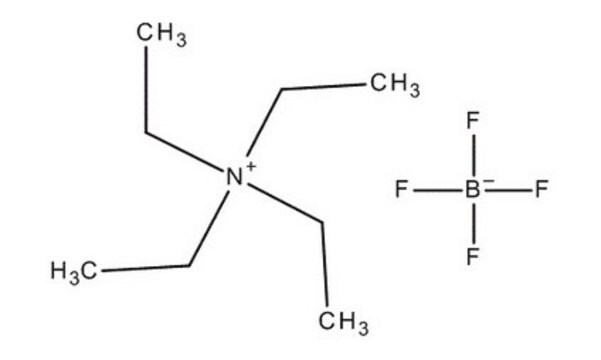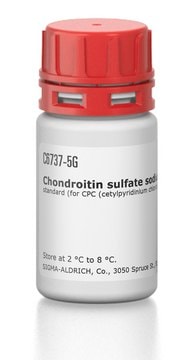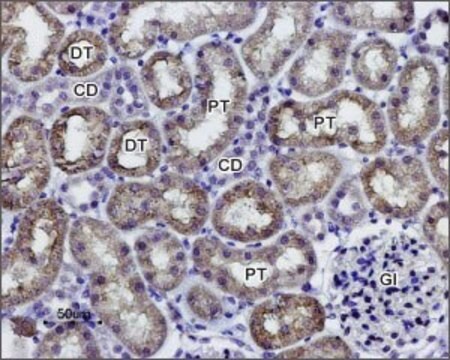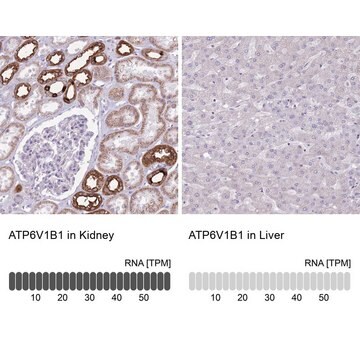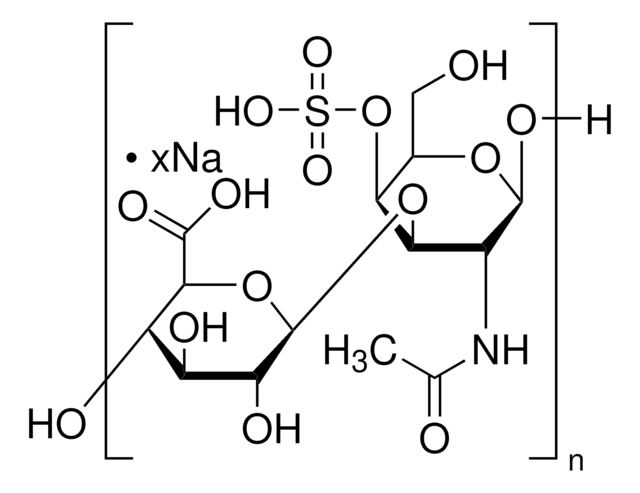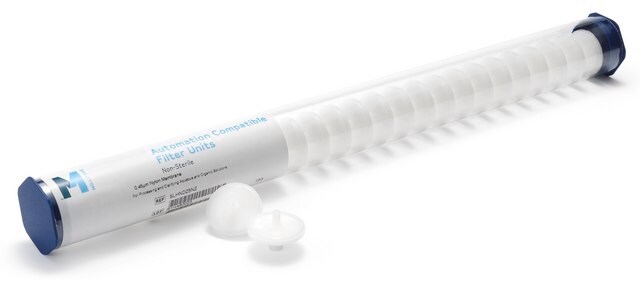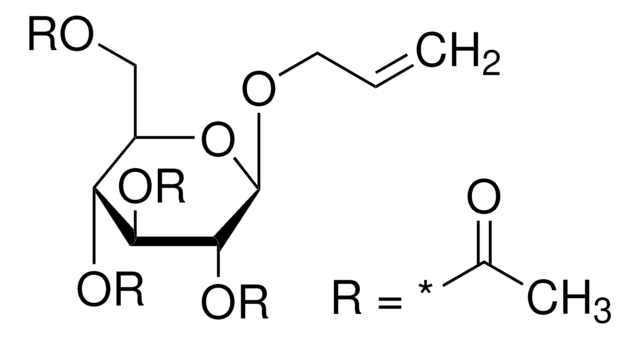추천 제품
생물학적 소스
rabbit
Quality Level
결합
unconjugated
항체 형태
IgG fraction of antiserum
항체 생산 유형
primary antibodies
클론
polyclonal
양식
lyophilized powder
종 반응성
rat, human
기술
immunohistochemistry: suitable
western blot (chemiluminescent): 1:200-1:1000
UniProt 수납 번호
저장 온도
−20°C
타겟 번역 후 변형
unmodified
유전자 정보
human ... AQP2(359)
mouse ... Aqp2(11827)
rat ... Aqp2(25386)
관련 카테고리
일반 설명
Aquaporin 2 (AQP2) exists as a tetramer with C terminus showing multiple conformations and binds two cadmium ions. AQP2 gene is mapped to human chromosome 12q13.12. It is associated with intracellular vesicles.
Aquaporin 2 (AQP2) is a water channel protein that regulates water balance in renal connecting tubules and collecting ducts. AQP2 is activated by anti-diuretic hormone and subsequently facilitates water inflow in renal cells. This protein also interacts with integrin to modulate epithelial cell morphogenesis and cell movement . Anti-Water Channel Aquaporin 2 antibody recognizes aquaporin 2 from rat by immunoblotting. The antibody also reacts with mouse and human AQP2.
면역원
synthetic peptide corresponding to amino acids 254-271 of rat or mouse aquaporin 2 (with additional N-terminal lysine and tyrosine) conjugated to KLH with glutaraldehyde. The epitope is identical in rat and mouse and highly conserved in human.
애플리케이션
Anti-Water Channel Aquaporin 2 antibody is also suitable for use in chemiluminescent western blot (1:200-1:1000), and immunoblot.
Anti-Water Channel Aquaporin 2 antibody produced in rabbit has been used in:
- immunostaining
- immunohistochemistry
- immunofluorescence
- immunoblotting
Immunohistochemistry was performed on 10% formalin-fixed parraffin embedded rat kidney sections using rabbit anti-AQP2 at a concentration of 5μg/ml. Use of anti-AQP2 allowed visualization of the medullary thick ascending limb and collecting ducts.
생화학적/생리학적 작용
Aquaporin (AQP2) N-terminal region plays a key role in trafficking. The C-terminal phosphorylation is crucial for the water permeability function of the apical membrane. Also, ubiquitination at lysine 270 is needed for AQP2 sorting and degradation in lysosomes or elimination through exosomes. Mutation in AQP2 gene is implicated in congenital nephrogenic diabetes insipidus (NDI), a water balance disorder. The functional dysregulation of AQP2 is also correlated to preeclampsia, congestive heart failure and liver cirrhosis.
물리적 형태
Lyophilized from a solution containing phosphate buffered saline, pH 7.4, containing 1% BSA, and 0.05% sodium azide.
제조 메모
Isolated on immobilized Protein A
면책조항
Unless otherwise stated in our catalog or other company documentation accompanying the product(s), our products are intended for research use only and are not to be used for any other purpose, which includes but is not limited to, unauthorized commercial uses, in vitro diagnostic uses, ex vivo or in vivo therapeutic uses or any type of consumption or application to humans or animals.
적합한 제품을 찾을 수 없으신가요?
당사의 제품 선택기 도구.을(를) 시도해 보세요.
신호어
Danger
유해 및 위험 성명서
Hazard Classifications
Acute Tox. 3 Dermal - Acute Tox. 4 Inhalation - Acute Tox. 4 Oral - Aquatic Chronic 3
Storage Class Code
6.1C - Combustible acute toxic Cat.3 / toxic compounds or compounds which causing chronic effects
WGK
WGK 3
Flash Point (°F)
Not applicable
Flash Point (°C)
Not applicable
개인 보호 장비
Eyeshields, Gloves, type N95 (US)
Khalil El Karoui et al.
Nature communications, 7, 10330-10330 (2016-01-21)
In chronic kidney disease (CKD), proteinuria results in severe tubulointerstitial lesions, which ultimately lead to end-stage renal disease. Here we identify 4-phenylbutyric acid (PBA), a chemical chaperone already used in humans, as a novel therapeutic strategy capable to counteract the
George J Schwartz et al.
The Journal of clinical investigation, 125(12), 4365-4374 (2015-11-01)
The nephron cortical collecting duct (CCD) is composed of principal cells, which mediate Na, K, and water transport, and intercalated cells (ICs), which are specialized for acid-base transport. There are two canonical IC forms: acid-secreting α-ICs and HCO3-secreting β-ICs. Chronic
Alexandra Rieger et al.
PloS one, 11(7), e0158977-e0158977 (2016-07-16)
During nephrogenesis, POU domain class 3 transcription factor 3 (POU3F3 aka BRN1) is critically involved in development of distinct nephron segments, including the thick ascending limb of the loop of Henle (TAL). Deficiency of POU3F3 in knock-out mice leads to
Kuniaki Takata et al.
Histochemistry and cell biology, 130(2), 197-209 (2008-06-21)
Aquaporins (AQPs) are membrane proteins serving in the transfer of water and small solutes across cellular membranes. AQPs play a variety of roles in the body such as urine formation, prevention from dehydration in covering epithelia, water handling in the
Jared Q Gerlach et al.
PloS one, 8(9), e74801-e74801 (2013-09-27)
Urinary extracellular vesicles (uEVs) are released by cells throughout the nephron and contain biomolecules from their cells of origin. Although uEV-associated proteins and RNA have been studied in detail, little information exists regarding uEV glycosylation characteristics. Surface glycosylation profiling by
자사의 과학자팀은 생명 과학, 재료 과학, 화학 합성, 크로마토그래피, 분석 및 기타 많은 영역을 포함한 모든 과학 분야에 경험이 있습니다..
고객지원팀으로 연락바랍니다.
